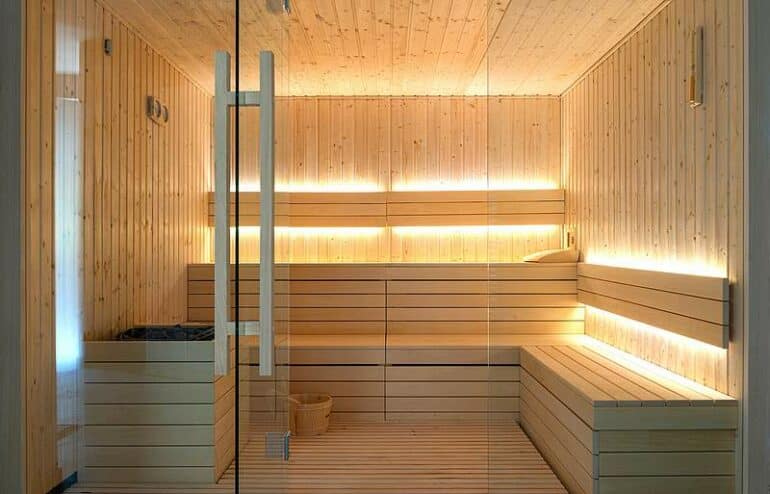The different types of sauna: Choose the right one for your needs
There are different types of sauna, each with different properties and effects on the body. The classic Finnish sauna is particularly sweat-inducing at a temperature of 176°F to 212°F. The bio-sauna, on the other hand, is gentler on the circulation, as it operates at lower temperatures (around 122 °F to 140 °F) and higher humidity. The infrared sauna, which emits heat via infrared radiators, is another alternative that is particularly suitable for people with circulatory problems. Choose the type of sauna that best suits your individual needs and preferences.
Material and workmanship: wood types and quality
Choosing the right wood is crucial to the quality and longevity of a sauna. Commonly used wood species include hemlock, cedar, spruce, and pine. Each type of wood has its own advantages and disadvantages. Hemlock, for example, is particularly resistant to moisture and has low resin and odor production. Cedar is also moisture resistant and has a natural antibacterial effect. Spruce and pine are less expensive alternatives, but are less moisture resistant. When choosing your sauna, look for quality workmanship and materials.
Ventilation and airing: ensure a healthy indoor climate
Adequate ventilation is important to prevent mold growth in the sauna and to ensure a comfortable indoor climate. Make sure that the sauna has a ventilation system that allows continuous air exchange. In addition, the sauna should have an adequately sized exhaust duct that removes moist air to the outside.
Sauna heater: power and efficiency
The sauna heater is the heart of any sauna. It should be adequately sized to ensure even heat distribution. Look for a high-quality heater with good heat conductivity and storage. Electric heaters are the most common option, but wood-fired heaters are also available. The latter require more effort to handle, but create a particularly rustic atmosphere.
Control and operation: comfort and safety
A modern sauna control system allows for easy operation and programming of the sauna. Make sure that the control unit has different programs to allow for different sauna sessions. Safety features such as an automatic shut-off after a certain time and overheating protection are also important features of a good sauna.
Accessories and extras: round off your sauna experience
A good sauna also needs the right accessories. These include sauna cushions, towels, infusion buckets and ladles. Make sure these items are made of high-quality materials and fit well with your sauna. Additional extras such as colored light therapy, sound system or aromatherapy can further enhance the sauna experience.
Conclusion
A good sauna is characterized by a variety of factors, including the right type of sauna, high-quality materials and workmanship, adequate ventilation, powerful sauna heaters, and modern controls and safety features. Consider these aspects when choosing your sauna to ensure the best sauna experience.

